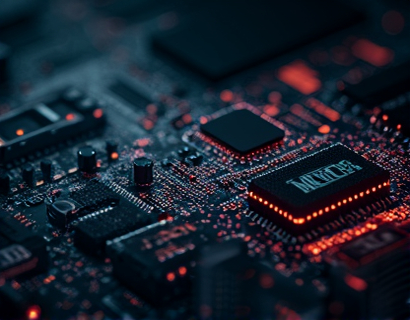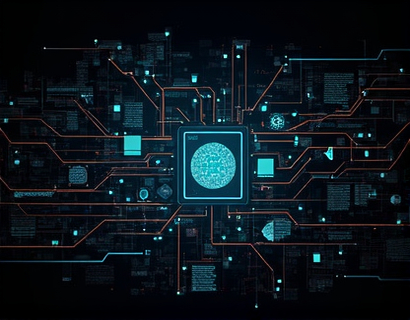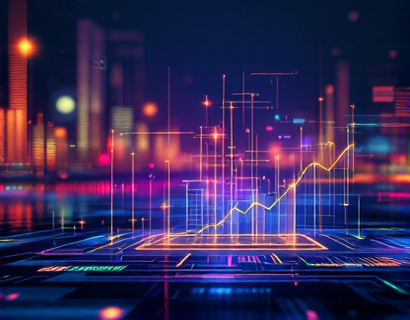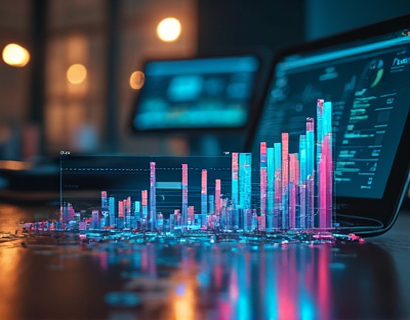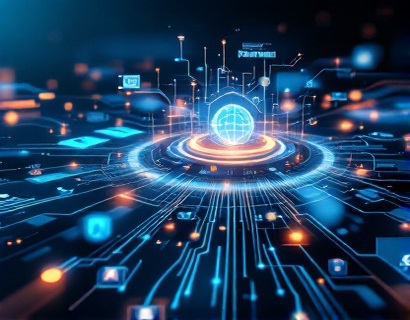Next-Gen Smart Contract AMMs: Revolutionizing DeFi Trading
In the rapidly evolving world of decentralized finance, Automated Market Makers (AMMs) have emerged as pivotal components, offering a novel approach to trading and liquidity provision. Traditional AMMs have laid the groundwork for decentralized exchanges, but the next generation of smart contract AMMs is taking this technology to unprecedented heights. This article delves into the advanced features and benefits of these next-gen AMMs, focusing on how they are elevating DeFi trading through sophisticated automation and enhanced liquidity management.
Understanding Next-Gen Smart Contract AMMs
Next-gen smart contract AMMs are built on the foundation of decentralized finance but incorporate cutting-edge technologies and algorithms to address the limitations of their predecessors. These AMMs leverage advanced smart contracts to create more efficient, transparent, and user-friendly trading experiences. The core innovation lies in the use of dynamic liquidity pools, algorithmic trading, and real-time data integration, which together form a robust ecosystem for decentralized trading.
Dynamic Liquidity Pools
One of the most significant advancements in next-gen AMMs is the introduction of dynamic liquidity pools. Unlike traditional AMMs that rely on fixed weightings for liquidity provision, dynamic pools adjust the liquidity ratios based on market conditions and user demand. This flexibility ensures that liquidity is always optimized, reducing the risk of impermanent loss and enhancing the overall efficiency of the trading process. Users can now contribute to pools that adapt to real-time market dynamics, making their liquidity more valuable and less exposed to market volatility.
The implementation of dynamic pools is made possible through sophisticated smart contracts that continuously monitor and adjust the pool parameters. These contracts use complex algorithms to analyze market data, user behavior, and other relevant factors to determine the optimal liquidity distribution. This not only improves the liquidity provision but also enhances the trading experience by reducing slippage and improving order execution.
Algorithmic Trading Integration
Another key feature of next-gen AMMs is the integration of algorithmic trading. These AMMs incorporate advanced trading algorithms that can execute trades automatically based on predefined criteria. This automation not only speeds up the trading process but also ensures that trades are executed at the most favorable prices, maximizing returns for users. The algorithms can be tailored to various trading strategies, from simple market making to complex arbitrage and hedging techniques.
The integration of algorithmic trading in AMMs is facilitated by the transparency and programmability of smart contracts. Users can deploy their custom algorithms directly on the blockchain, ensuring that the trading process is immutable and trustless. This level of automation reduces the need for intermediaries, lowers transaction costs, and increases the overall efficiency of the trading ecosystem.
Real-Time Data and Market Insights
Next-gen AMMs leverage real-time data and market insights to provide users with a more informed and responsive trading environment. By integrating with decentralized data feeds, these AMMs can access up-to-date market information, including price feeds, trading volumes, and order book data. This real-time data is crucial for making informed trading decisions and for the dynamic adjustment of liquidity pools.
Users can benefit from these insights through dashboards and analytics tools built into the AMM platform. These tools offer real-time monitoring of portfolio performance, market trends, and liquidity metrics. The data-driven approach enables traders to identify opportunities, manage risks, and optimize their strategies in real time. This level of transparency and access to timely information is a significant improvement over traditional trading platforms.
Enhanced Liquidity Management
Liquidity management is a critical aspect of any AMM, and next-gen solutions have taken this to a new level. The combination of dynamic pools and algorithmic trading allows for more sophisticated liquidity management strategies. These AMMs can attract and retain liquidity providers by offering better incentives and more favorable terms. The adaptive nature of the pools ensures that liquidity is always available when and where it is needed most, reducing the risk of liquidity drains during market stress periods.
Moreover, next-gen AMMs implement advanced risk management techniques to protect both liquidity providers and traders. Smart contracts can enforce rules to prevent excessive volatility, set liquidity thresholds, and trigger automatic rebalancing of pools. These measures help maintain the stability of the liquidity pools and ensure a smooth trading experience even during turbulent market conditions.
User-Centric Features
The design of next-gen AMMs is heavily focused on user experience. The platforms are built with intuitive interfaces and user-friendly tools that cater to both novice and experienced traders. For newcomers, educational resources and guided tutorials are available to help them understand the basics of DeFi trading and the functionality of the AMM. For more advanced users, the platforms offer customizable settings and advanced trading features that allow for fine-tuning of trading strategies.
Another user-centric feature is the seamless integration with other DeFi protocols and services. Next-gen AMMs can interact with lending platforms, stablecoin protocols, and other decentralized applications, creating a cohesive and interconnected DeFi ecosystem. This interoperability enhances the overall utility of the AMM and provides users with a more comprehensive set of tools for their financial activities.
Security and Trustlessness
Security remains a paramount concern in the DeFi space, and next-gen AMMs are designed with robust security measures to protect user assets. The use of advanced smart contract audits, formal verification, and decentralized governance ensures that the platforms are secure and resilient against potential attacks. These AMMs operate on a trustless model, where all transactions are verified and executed by the smart contracts without the need for intermediaries.
Transparency is another cornerstone of these AMMs. All smart contract code is open-source, allowing the community to review and audit the code for potential vulnerabilities. This openness builds trust among users and fosters a collaborative environment for continuous improvement and security enhancement.
Scalability and Interoperability
Scalability is a critical factor for the widespread adoption of next-gen AMMs. These platforms are built to handle high volumes of transactions and support a large number of users simultaneously. By leveraging layer 2 solutions and optimizing smart contract execution, next-gen AMMs can maintain high performance and low transaction fees, even during peak usage periods.
Interoperability is another key aspect, enabling these AMMs to function across different blockchain networks. Through the use of cross-chain bridges and atomic swaps, users can seamlessly move assets between different DeFi protocols and ecosystems. This interoperability not only expands the user base but also enhances the liquidity and accessibility of the AMM.
Future Prospects and Challenges
The future of next-gen smart contract AMMs looks promising, with ongoing developments in blockchain technology and DeFi innovations. The integration of artificial intelligence and machine learning can further enhance the automation and optimization of trading strategies. Additionally, the adoption of layer 2 solutions and cross-chain interoperability will continue to improve scalability and user experience.
However, there are challenges that need to be addressed to ensure the widespread adoption of these AMMs. Regulatory clarity is essential to build trust and attract institutional investors. Moreover, user education and accessibility remain important to bring more participants into the DeFi ecosystem. Addressing these challenges will be crucial for the long-term success and growth of next-gen AMMs.
In conclusion, next-gen smart contract AMMs are transforming the landscape of decentralized trading. By combining dynamic liquidity pools, algorithmic trading, real-time data, and advanced security measures, these platforms offer a superior trading experience. As the DeFi space continues to evolve, next-gen AMMs will play a pivotal role in shaping the future of finance, providing more efficient, transparent, and user-friendly trading solutions.






